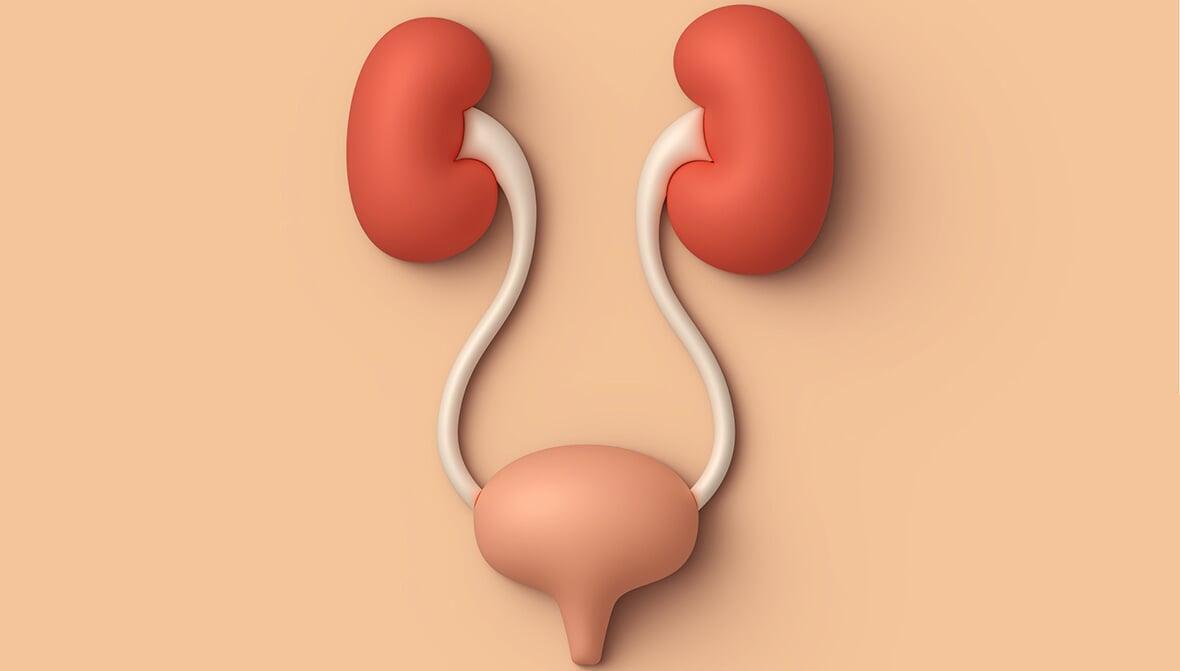The Nitty Gritty Details

Pelvic floor muscle training (PFMT) has become one of the most widely recommended treatments for improving bladder control, particularly for individuals experiencing urinary incontinence. Whether it's stress incontinence, urge incontinence, or mixed incontinence, strengthening the muscles of the pelvic floor can provide significant relief. But what exactly happens in the body when these muscles are trained, and how does it contribute to better bladder control? Let’s explore the science behind pelvic floor muscle training and how it works to support bladder function.
What is the Pelvic Floor?
The pelvic floor consists of a group of muscles and connective tissue that form a "hammock" at the base of the pelvis. These muscles support several important organs, including the bladder, uterus (in women), rectum, and prostate (in men). They also play a key role in controlling the opening and closing of the urethra, which is essential for urinary control.
When these muscles are strong and functioning properly, they help to maintain continence (the ability to hold urine) by supporting the bladder and providing the necessary pressure to keep the urethra closed until it’s time to urinate. Conversely, when pelvic floor muscles become weak or dysfunctional, they may fail to adequately support the bladder, leading to issues with bladder control, including incontinence.
How Pelvic Floor Muscle Training Works
Pelvic floor muscle training involves exercises designed to strengthen and improve the function of the muscles that support the bladder and other pelvic organs. The most commonly known exercise for pelvic floor training is the Kegel exercise, which focuses on contracting and relaxing the pelvic floor muscles.
Here’s how pelvic floor training improves bladder control:
- Strengthening the Pelvic Floor Muscles
The primary goal of pelvic floor muscle training is to strengthen the muscles that control the flow of urine. By regularly contracting and relaxing these muscles, they become more toned, resilient, and responsive to the demands of bladder function. This added strength provides more support for the bladder and urethra, which can help prevent leaks and improve overall bladder control.
- How it works: When you contract your pelvic floor muscles (like when doing Kegels), you are essentially "training" them to engage more forcefully and for longer durations. This strengthens the muscles over time, allowing them to better support the bladder and control urination.
- Improving Sphincter Function
The pelvic floor muscles work in conjunction with the sphincter muscles of the bladder and urethra to regulate urine flow. When the pelvic floor muscles are weak, they may struggle to keep the bladder sphincter (which controls the release of urine) closed tightly, leading to incontinence.
- How it works: By strengthening the pelvic floor muscles, PFMT helps enhance the function of the bladder sphincter. A stronger pelvic floor provides more control over when the sphincter opens and closes, reducing the likelihood of involuntary urine leakage.
- Restoring Coordination of Muscle Contractions
In addition to strengthening the muscles, pelvic floor muscle training also focuses on improving the coordination between the pelvic floor muscles and the bladder. This coordination is crucial for maintaining bladder control. In cases of urinary urgency or frequency, the pelvic floor muscles may not respond quickly or effectively when needed.
- How it works: PFMT helps train the pelvic floor muscles to respond more efficiently to the sensations of fullness in the bladder. This means that when the bladder fills, the pelvic floor muscles engage and keep the urethra closed until you are ready to go to the bathroom. Over time, this improves the timing and coordination of bladder function.
- Increasing Bladder Capacity
Stronger pelvic floor muscles can help prevent bladder prolapse (a condition where the bladder drops or sags) and improve bladder function. When pelvic floor muscles are weak, they may not support the bladder properly, leading to a reduced bladder capacity and more frequent urges to urinate.
- How it works: With regular pelvic floor muscle training, the pelvic floor muscles become better equipped to hold the bladder in place, maintaining its natural position. This improves the bladder’s capacity to hold urine for longer periods, reducing the urgency and frequency associated with incontinence.
- Managing Pressure on the Pelvic Floor
Activities that increase intra-abdominal pressure, such as coughing, sneezing, laughing, or heavy lifting, can put added stress on the pelvic floor muscles. This pressure can overwhelm weak pelvic floor muscles, leading to stress incontinence (the leakage of urine during these activities).
- How it works: Pelvic floor muscle training helps build resilience in these muscles, allowing them to better withstand increases in intra-abdominal pressure. As the muscles become stronger and more supportive, they can more effectively resist pressure, preventing leaks when coughing, sneezing, or engaging in physical activities.
The Physiological Mechanism Behind PFMT and Bladder Control
To understand the impact of pelvic floor muscle training on bladder control, it’s important to recognize the physiological mechanism that occurs during muscle contractions. Here’s how PFMT improves bladder function on a deeper level:
- Neuromuscular Connection
Pelvic floor muscle training stimulates the nerves that control the pelvic floor. Regular exercise of these muscles increases neural communication, helping the brain send stronger signals to the pelvic muscles. The more often the muscles are trained, the more efficient this neural connection becomes.
- This heightened neuromuscular connection improves the responsiveness of the pelvic floor muscles, allowing them to react quickly to the urge to urinate and provide better control over bladder function.
- Increased Muscle Tone and Endurance
Pelvic floor muscle training not only strengthens the muscles but also enhances their endurance. Over time, as the muscles become more conditioned, they are able to maintain their contraction for longer periods without tiring. This is important because the pelvic floor needs to provide continuous support to the bladder throughout the day and night.
- With improved muscle tone and endurance, the pelvic floor can provide longer-lasting support for bladder control, making it easier to hold urine until you reach the restroom.
- Balanced Pressure in the Abdomen and Pelvis
When the pelvic floor muscles are weak, there is an imbalance in intra-abdominal pressure. This imbalance can cause urine leakage, particularly during physical activities or while laughing or sneezing. Pelvic floor muscle training helps restore balance to the pressure system within the pelvis and abdomen.
- By strengthening the pelvic floor muscles, PFMT helps stabilize this pressure system, allowing for better control over bladder function during activities that naturally increase abdominal pressure.
How Long Does It Take to See Results?
Pelvic floor muscle training isn’t an overnight fix. It takes time and consistent practice to see results. Most people start to notice improvements in bladder control after about 4 to 6 weeks of regular exercise. However, full benefits can take several months, depending on the severity of the incontinence and the consistency of the training.
- Tip: Be patient and committed to the process. For optimal results, aim to practice pelvic floor exercises (like Kegels) daily. With time, you’ll strengthen the muscles and improve your bladder control.
Conclusion
Pelvic floor muscle training is a scientifically backed, effective approach to improving bladder control. By strengthening the pelvic floor muscles, enhancing the coordination between the bladder and pelvic floor, and improving overall muscle tone, PFMT can provide long-term relief from urinary incontinence. Understanding the science behind how these exercises work can help motivate and guide you in your journey to better bladder health. With consistent practice and proper technique, pelvic floor muscle training can offer significant improvements in both bladder control and overall quality of life.


